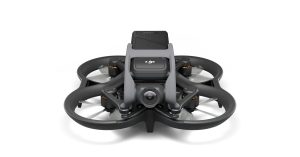Drone News
Parrot Drone BeBop 2 Is Like a “Flying Image Processor”

The ability to make decisions autonomously is not just what makes robots useful, it’s what makes robots
robots. We value robots for their ability to sense what’s going on around them, make decisions based on that information, and then take useful actions without our input. In the past, robotic decision making followed highly structured rules—if you sense this, then do that. In structured environments like factories, this works well enough. But in chaotic, unfamiliar, or poorly defined settings, reliance on rules makes robots notoriously bad at dealing with anything that could not be precisely predicted and planned for in advance.
RoMan, along with many other robots including home vacuums, drones, and autonomous cars, handles the challenges of semistructured environments through artificial neural networks—a computing approach that loosely mimics the structure of neurons in biological brains. About a decade ago, artificial neural networks began to be applied to a wide variety…
Source: spectrum.ieee.org









